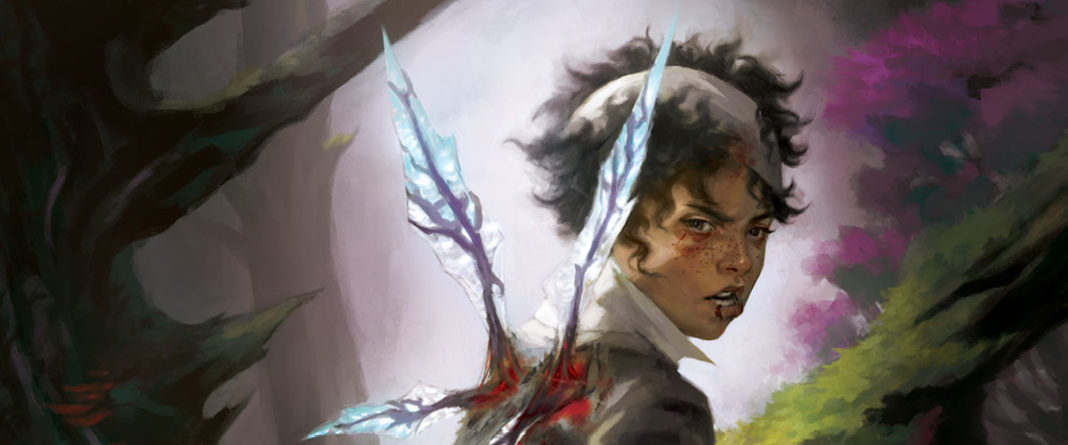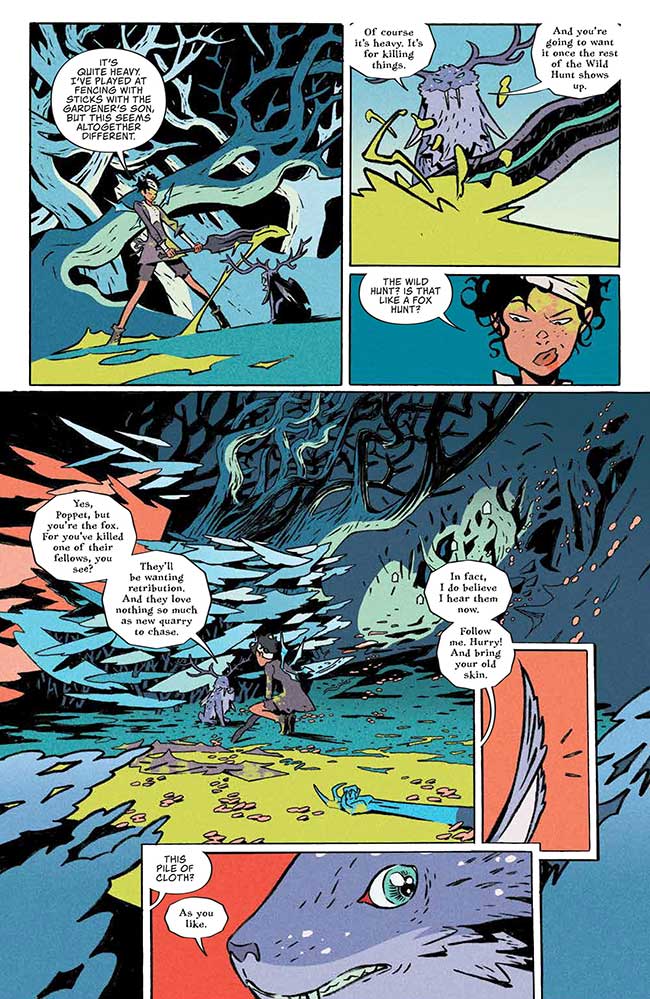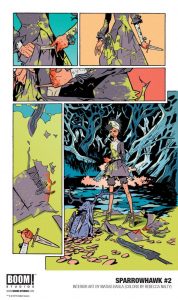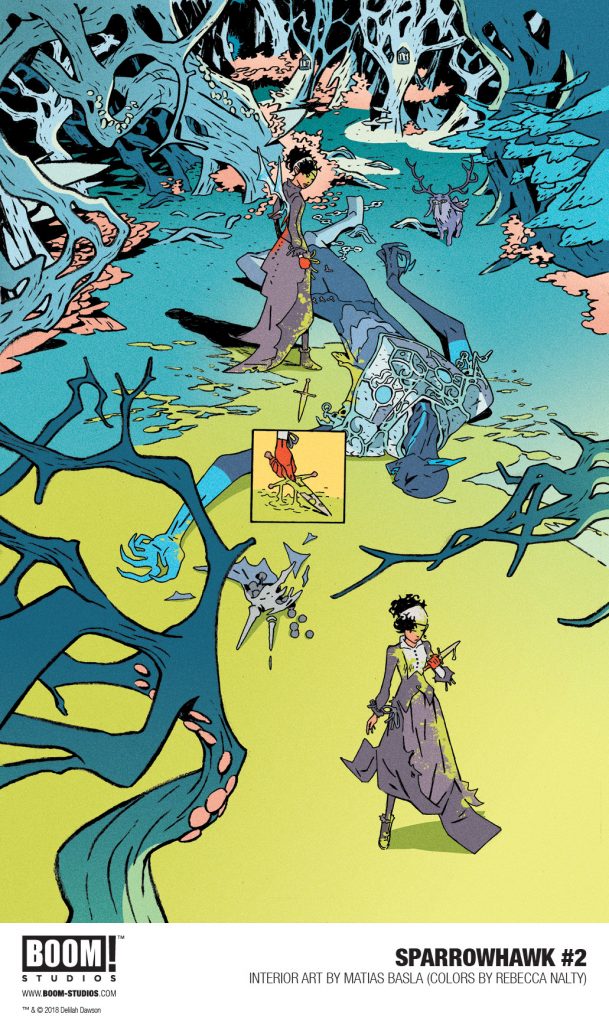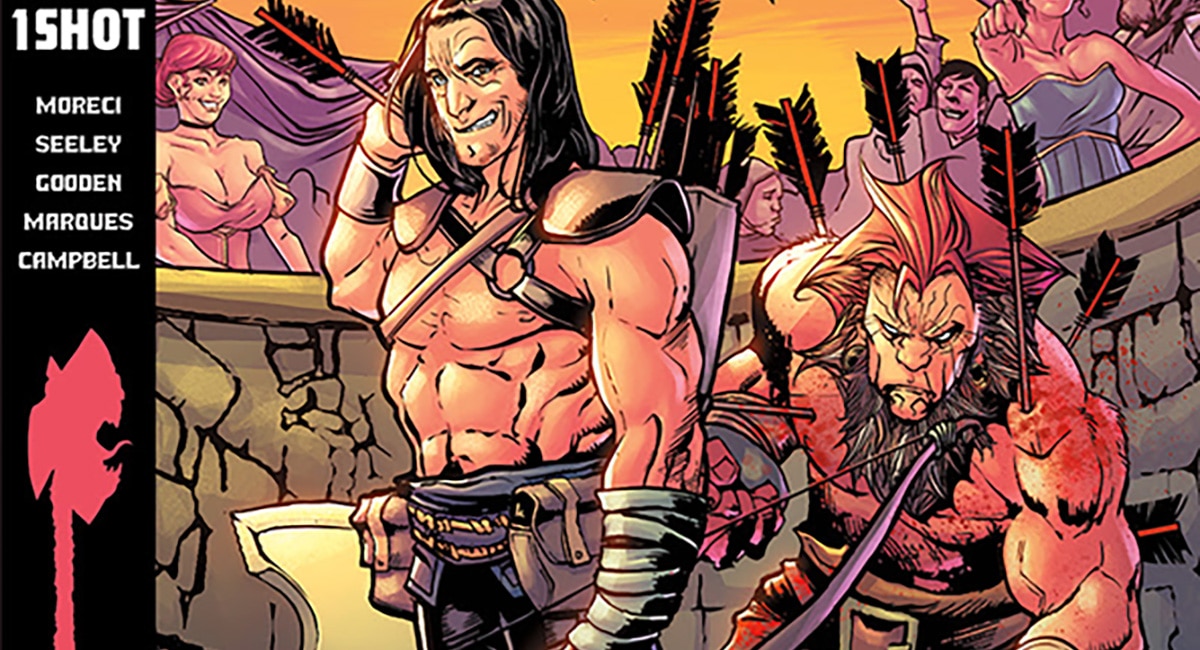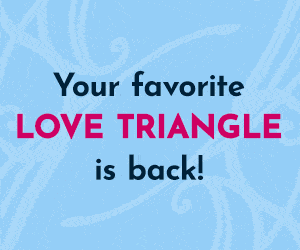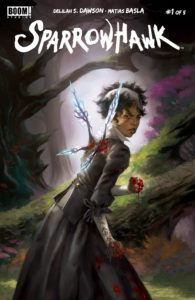
Writer: Delilah S. Dawson
Artist: Matias Basla
Colorist: Rebecca Nalty
Letterer: Jim Campbell
Publisher: BOOM! Studios
Sparrowhawk is a bit of a mess. It’s beautifully illustrated, well-written and gorgeously coloured. I can’t sing the praises of colourist Rebecca Nalty enough — she makes this book vibrate with style and energy. If only the story was as interesting as its other parts, this book would be fantastic.
The story revolves around Artemisia, a Victorian era girl who is not fitting in with rest of society. She’s the illegitimate daughter of Naval Captain Archibald Grey. But apart from her sister Caroline, her family hates her. She’s never felt like she had a place in this high class society. She’s accidentally whisked away into a parallel world by an evil Faerie queen bent on conquering our world. Artemisia must try to find a way to get back to her realm to save her sister and the world. Along the way she’s helped by the worst companions: a lying cat, a giant pacifist, and a vampire who abhors violence.
While the premise of Sparrowhawk seems pretty boilerplate fantasy, it differs in many aspects, mostly in how violence plays a role in that world. As a human, Artemisia cannot escape the world she’s in; only fairies can travel through worlds. So she must become a fairy. To do so, she must kill. Every entity she kills brings her closer to her goal of becoming a fairy and being able to go back to her world.
It has a clever hook, but the way this is handled is surprisingly clumsy. Particularly, the fight sequences begin early and begin expanding in scope drastically over a short period of time. It’s grotesque and also gratuitous. Our protagonist never seems to question her own behaviour, taking for granted that in a violent world, the only thing to do is slaughter everything around her. She never even seems to be interested in asking about a path that doesn’t involve absolute death, which creates a sort of distance between her and the reader.
The most frustrating element of the book is the sidekick Crispin. Artemisia meets Crispin immediately upon arriving in the Faerie world and begins to learn about the world thanks to his help. The issue is that she takes all of her information from him. This becomes a frustrating, recurring element that really impedes enjoyment of the book. From the early moments we meet Crispin, the reader understands he’s not trustworthy. However, Artemisia seems either oblivious to that or doesn’t really seem to care. This breaks our suspension of disbelief really quickly as Crispin is the one that advises she kills everything possible, lest she remain in the Faerie world forever.
It’s frustrating to constantly be steps ahead of our protagonist and multiple steps ahead of where the story is heading. Artemisia also never seem to quite know what’s happening around her. She’s constantly asking questions that Crispin responds to with lies. She also believes those lies, which ultimately makes her a very passive protagonist. It’s ironic since Artemisia is constantly fighting and therefore active physically, but her personality is very passive.
What truly saves the book is the incredible colouring work of Rebecca Nalty. I’ve already commented in my review of The Avant-Guards, Vol. 1 that Nalty made the book vibrate with her use of bold pink palettes throughout the book. She’s quickly becoming my favourite colourist and in my opinion, one of BOOM! Studios’ secret weapons. In Sparrowhawk, she uses an almost fluorescent colour palette and it really works. There’s even instances where these flashy, fluorescent colours bleed onto the gutters between panels. It’s a really interesting way of portraying this otherworldly environment.
Her colours also really bring to the forefront the bizarre character design of Matias Basla. It makes the monsters, faeries and beasts radiate with an aura of intimidation and weirdness that’s pretty surreal. It also makes the world stand out as a bizarre and disturbing environment. If not for her colours, I probably would have disliked the book a lot more.
There’s kernels of a very good book in Sparrowhawk, but unfortunately, the story drags the book down in a way it can’t recover. I had high hopes for this comic, but I felt quite disappointed after reading it. I’ll be on the lookout for Rebecca Nalty’s work in the future, but more Sparrowhawk, not so much.



